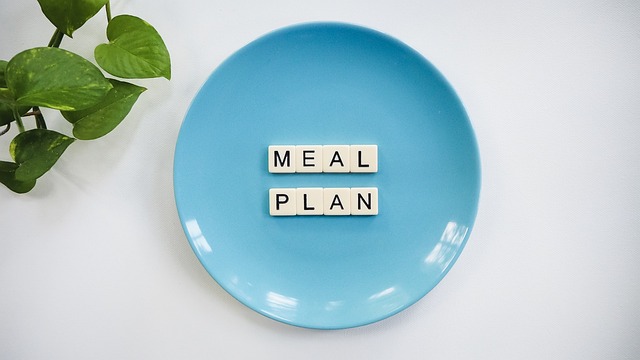
Losing weight is a common goal for many people, but it can be challenging to know where to start. With so many diet plans available, it can be overwhelming to determine which one is right for you. A diet plan for weight loss should be based on healthy, sustainable habits that can be maintained long-term.
One important factor to consider when choosing a diet plan is your individual needs and preferences. Some people may prefer a low-carb or ketogenic diet, while others may prefer a plant-based or Mediterranean-style diet. It’s important to choose a plan that you enjoy and can stick to, as consistency is key for long-term success.
Another important aspect of a diet plan for weight loss is ensuring that it provides adequate nutrition. Restrictive diets that eliminate entire food groups or severely limit calorie intake can be harmful to your health. A balanced diet that includes a variety of nutrient-dense foods is essential for maintaining optimal health and achieving weight loss goals.
Table of Contents
Understanding Weight Loss
Weight loss is a process of reducing body weight through various methods, including diet and exercise. It is essential to understand that weight loss is not just about shedding extra pounds, but it is also about improving overall health and well-being.
There are many factors that contribute to weight gain, such as genetics, lifestyle, and diet. To lose weight, one needs to create a calorie deficit by consuming fewer calories than the body burns. This can be achieved by following a healthy diet plan and increasing physical activity.
A healthy diet plan for weight loss should include a variety of nutrient-dense foods, such as fruits, vegetables, whole grains, and lean protein sources. It is also important to limit the intake of processed foods, sugary drinks, and high-fat foods.
Physical activity is an essential component of weight loss. It not only burns calories but also helps to build lean muscle mass, which increases metabolism and promotes fat loss. It is recommended to engage in at least 150 minutes of moderate-intensity aerobic exercise per week, along with strength training exercises.
In conclusion, weight loss is a gradual process that requires commitment, dedication, and patience. By following a healthy diet plan and engaging in regular physical activity, one can achieve sustainable weight loss and improve overall health and well-being.
Determining Caloric Needs
Calculating Basal Metabolic Rate
Determining the number of calories required for weight loss begins with calculating one’s basal metabolic rate (BMR). BMR is the number of calories the body burns at rest. It is influenced by several factors, including age, gender, height, and weight. There are several formulas available to calculate BMR, such as the Harris-Benedict equation and the Mifflin-St Jeor equation. These formulas take into account the individual’s age, gender, height, and weight to determine the number of calories required to maintain their current weight.
Activity Level Adjustment
Once the BMR is calculated, the next step is to adjust it based on the individual’s activity level. The more active a person is, the more calories they burn. The level of activity is usually classified into five categories: sedentary, lightly active, moderately active, very active, and extremely active. Each category has a specific activity level multiplier that is used to adjust the BMR. For example, a sedentary person who does little to no exercise would have a multiplier of 1.2, while a very active person who exercises vigorously for an hour or more each day would have a multiplier of 1.725.
By multiplying the BMR by the activity level multiplier, one can determine the number of calories required to maintain their current weight. To lose weight, one must create a calorie deficit by consuming fewer calories than they burn. A safe and effective rate of weight loss is typically 1-2 pounds per week, which requires a daily calorie deficit of 500-1000 calories.
In conclusion, determining one’s caloric needs is an essential step in creating a successful weight loss plan. By calculating the BMR and adjusting it based on activity level, one can determine the number of calories required to maintain their current weight and create a calorie deficit to achieve their weight loss goals.
Macronutrient Distribution
Proteins
Proteins are essential macronutrients that are required for building and repairing tissues, and for the production of enzymes and hormones. A diet plan for weight loss should include adequate amounts of protein to maintain muscle mass and support weight loss.
Good sources of protein include lean meats, poultry, fish, legumes, nuts, and seeds. A serving size of protein is typically 3-4 ounces, or about the size of a deck of cards.
Carbohydrates
Carbohydrates are another important macronutrient that provide energy to the body. However, not all carbohydrates are created equal. A diet plan for weight loss should focus on complex carbohydrates such as whole grains, fruits, and vegetables, which provide fiber and nutrients and help to keep you feeling full.
Simple carbohydrates, such as refined sugars and white flour, should be limited as they provide little nutritional value and can lead to spikes in blood sugar levels. A serving size of carbohydrates is typically 1/2 cup of grains or fruit, or 1 cup of vegetables.
Fats
Fats are often demonized in weight loss diets, but they are actually an important macronutrient that the body needs for energy and to absorb certain vitamins. However, not all fats are created equal. A diet plan for weight loss should focus on healthy fats such as those found in nuts, seeds, avocados, and fatty fish.
Saturated and trans fats, found in processed foods and animal products, should be limited as they can increase the risk of heart disease. A serving size of fats is typically 1 tablespoon of oil or 1/4 cup of nuts or seeds.
Creating a Balanced Diet Plan
Meal Timing
Timing of meals is an important aspect of a balanced diet plan. It is recommended to have three main meals and two snacks in a day. Breakfast should be consumed within an hour of waking up, lunch should be consumed in the middle of the day, and dinner should be consumed a few hours before bedtime. Snacks should be consumed in between meals to avoid overeating during main meals.
Portion Control
Portion control is another important aspect of a balanced diet plan. It is recommended to use smaller plates to control the portion size of meals. A balanced meal should consist of one-half of the plate filled with vegetables, one-quarter with whole grains, and one-quarter with lean protein. Avoid consuming large portions of high-calorie foods such as fried foods, sugary drinks, and desserts.
Hydration
Hydration is crucial for maintaining a balanced diet plan. It is recommended to consume at least 8-10 glasses of water per day. Drinking water before meals can help in controlling portion sizes and reducing overeating. Avoid sugary drinks such as soda and energy drinks as they contain empty calories and can lead to weight gain.
In summary, creating a balanced diet plan involves meal timing, portion control, and hydration. By following these guidelines, individuals can achieve their weight loss goals while maintaining a healthy lifestyle.
Choosing Healthy Foods
Whole Foods
Choosing whole foods is a great way to ensure that your diet is healthy and balanced. Whole foods are foods that have not been processed or refined, and they are usually found in the produce section of your grocery store. These foods are packed with nutrients and fiber, which can help you feel full and satisfied. Some examples of whole foods include fruits, vegetables, whole grains, and lean proteins.
Minimizing Processed Foods
Processed foods can be high in calories, unhealthy fats, and added sugars. It’s best to limit your intake of these foods and focus on whole foods instead. When shopping, try to choose foods that are minimally processed, such as canned vegetables or frozen fruits without added sugars. Read food labels carefully and avoid foods that contain artificial ingredients or high amounts of sodium.
Incorporating Superfoods
Superfoods are foods that are particularly high in nutrients and antioxidants. Incorporating these foods into your diet can help you feel more energized and healthy. Some examples of superfoods include blueberries, kale, salmon, and quinoa. Try to incorporate these foods into your meals whenever possible, either as a main component or as a side dish.
By choosing whole foods, minimizing processed foods, and incorporating superfoods, you can create a healthy and balanced diet that will help you achieve your weight loss goals.
Incorporating Physical Activity
Physical activity is an essential component of any weight loss plan. It helps to burn calories, increase metabolism, and improve overall health. Incorporating physical activity into a daily routine can be challenging, but it is crucial for achieving weight loss goals.
One way to increase physical activity is to incorporate exercise into daily routines. This can include walking or biking to work, taking the stairs instead of the elevator, or participating in fitness classes. It is recommended that adults engage in at least 150 minutes of moderate-intensity aerobic activity or 75 minutes of vigorous-intensity aerobic activity per week.
Strength training is also an important component of physical activity for weight loss. It helps to build muscle mass, which increases metabolism and burns more calories at rest. It is recommended that adults engage in strength training exercises at least two days per week.
In addition to structured exercise, incorporating more movement into daily routines can also be helpful for weight loss. This can include taking breaks from sitting every hour, standing while on the phone, or doing household chores. Every little bit of movement adds up and can contribute to weight loss success.
Overall, incorporating physical activity into a weight loss plan is essential for achieving long-term success. It is important to find activities that are enjoyable and sustainable to maintain a healthy lifestyle.
Behavioral Strategies for Weight Loss
Setting Realistic Goals
Setting realistic goals is a crucial step in achieving weight loss. It is important to set goals that are specific, measurable, achievable, relevant, and time-bound (SMART). For example, a goal could be to lose 1-2 pounds per week by eating a balanced diet and exercising for at least 30 minutes a day, five days a week. It is also important to celebrate small victories along the way to keep motivation high.
Tracking Progress
Tracking progress is essential for weight loss success. Keeping a food journal or using a tracking app can help individuals stay accountable and make better food choices. It is also important to track physical activity, such as steps taken or miles walked, to ensure that exercise goals are being met. Regularly weighing oneself can also provide insight into progress and help adjust goals if necessary.
Managing Cravings
Managing cravings is a common challenge when trying to lose weight. Some strategies for managing cravings include planning ahead by having healthy snacks on hand, practicing mindful eating by savoring each bite and paying attention to hunger and fullness cues, and finding alternative activities to distract from cravings, such as going for a walk or reading a book.
By implementing these behavioral strategies, individuals can set themselves up for success in achieving their weight loss goals.
Addressing Weight Loss Plateaus
When following a diet plan for weight loss, it is common to experience a plateau, which is a period of time where weight loss slows down or stops altogether. This can be frustrating, but there are strategies that can be used to overcome this obstacle.
One effective strategy is to increase physical activity. Adding more exercise to the daily routine can help burn more calories and jumpstart weight loss. This can be as simple as taking a daily walk or incorporating strength training exercises.
Another strategy is to adjust the diet plan. This can involve reducing calorie intake or changing the types of foods consumed. It is important to consult with a healthcare professional or registered dietitian before making any significant changes to the diet.
Tracking progress and setting realistic goals can also be helpful in overcoming a weight loss plateau. This can provide motivation and help identify areas that may need improvement.
It is important to remember that weight loss plateaus are a normal part of the weight loss journey and should not be a reason to give up. By implementing these strategies and staying committed to the diet plan, individuals can overcome plateaus and continue towards their weight loss goals.
Maintaining Weight Loss Long-Term
Maintaining weight loss long-term is crucial to achieving a healthy lifestyle. Here are some tips that can help:
- Focus on a balanced diet: A balanced diet is key to maintaining weight loss. This means consuming a variety of foods from all food groups, including fruits, vegetables, whole grains, lean proteins, and healthy fats.
- Stay active: Regular exercise is important for maintaining weight loss. Aim for at least 30 minutes of moderate-intensity activity most days of the week.
- Keep track of progress: Monitoring progress can help keep motivation high. This can be done through regular weigh-ins, tracking food intake, and keeping a journal.
- Surround yourself with support: Having a support system can make all the difference in maintaining weight loss. This can include family, friends, or a support group.
- Be patient: Maintaining weight loss is a long-term process. It’s important to be patient and not get discouraged by setbacks.
By following these tips, individuals can maintain weight loss long-term and achieve a healthier lifestyle.
Frequently Asked Questions
What are the essential components of a weight loss diet plan for women?
A weight loss diet plan for women should consist of a variety of foods from all food groups, including fruits, vegetables, whole grains, lean proteins, and healthy fats. It is important to limit the intake of processed foods, sugary drinks, and high-fat foods.
How can a beginner start a diet plan for weight loss effectively?
A beginner can start a diet plan for weight loss effectively by setting realistic goals, tracking their food intake, and gradually making changes to their diet. It is important to consult with a healthcare professional before starting a new diet plan.
What does a balanced 7-day diet plan for weight loss typically include?
A balanced 7-day diet plan for weight loss typically includes a variety of foods from all food groups, with an emphasis on fruits, vegetables, whole grains, lean proteins, and healthy fats. It is important to stay within a calorie range that promotes weight loss.
Where can I find a reliable and free diet plan for weight loss?
There are many reliable sources for free diet plans for weight loss, including healthcare professionals, registered dietitians, and reputable websites. It is important to choose a diet plan that is evidence-based and suits individual needs and preferences.
How should one structure a 1-month diet plan to achieve weight loss?
A 1-month diet plan to achieve weight loss should include a variety of foods from all food groups, with an emphasis on fruits, vegetables, whole grains, lean proteins, and healthy fats. It is important to stay within a calorie range that promotes weight loss and to incorporate regular physical activity.
What are some simple meal plan suggestions for someone looking to lose weight?
Some simple meal plan suggestions for someone looking to lose weight include incorporating more fruits and vegetables into meals, choosing lean proteins such as chicken or fish, replacing refined grains with whole grains, and limiting the intake of sugary drinks and processed foods.

